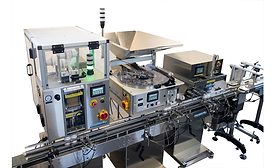News
Packaging and Supply Chains
PMMI’s Jorge Izquierdo, vice president of market development, sheds light on the state of industry trends including automation, OEE, omnichannel and blockchain
Read More
Know when to integrate automation in filling, packaging lines
Downtime, quality control, staffing are three key symptoms
August 6, 2020
Food Safety
Avoid these prepared foods with onions recalled in salmonella outbreak
Expanded warnings issued against variety of salads and fresh packaged items at Giant Eagle, Kroger, Walmart
August 6, 2020
Regulatory Watch
FDA outlines steps to help prevent recurring Salmonella outbreaks linked to papayas
Federal regulators issue second letter to papaya growers and others in the industry
July 29, 2020
Manufacturing News
COVID-19 hits meat and beverage hard
Report tracks how plants closures, shortages impact retail shelves and industry's future stability
July 29, 2020
Packaging
Can you recycle a greasy pizza box?
Despite what you may have heard, WestRock and Domino’s say don’t trash that stained corrugated box
July 28, 2020
Food Safety
Hostess recalls Raspberry Zingers that might mold
Snack maker says crème-filled cakes might go bad before expiration
July 23, 2020
Packaging
Paper bottles for drinks: Diageo, PepsiCo pursue plastic-free package
Johnnie Walker whiskey to debut recyclable paper bottles in 2021
July 15, 2020
Elevate your expertise in food engineering with unparalleled insights and connections.
Get the latest industry updates tailored your way.
JOIN TODAY!Copyright ©2024. All Rights Reserved BNP Media.
Design, CMS, Hosting & Web Development :: ePublishing












